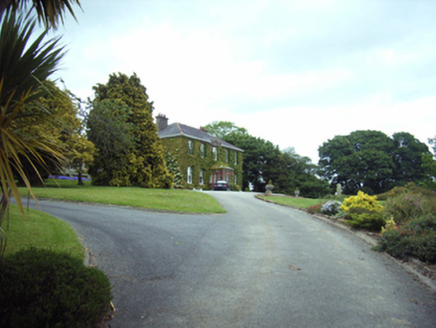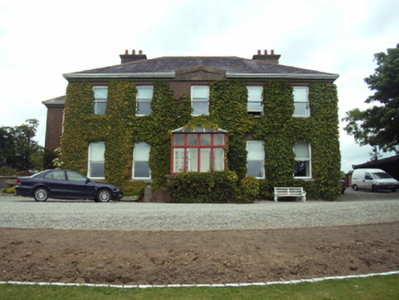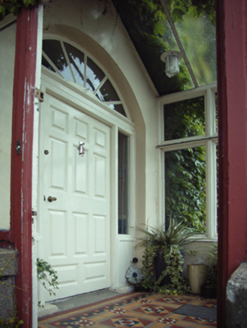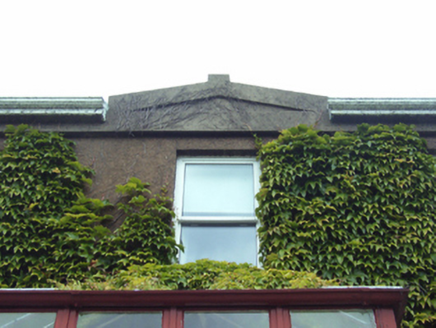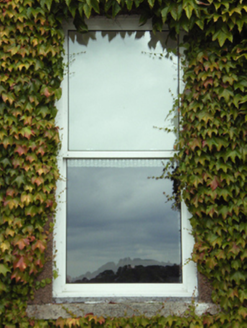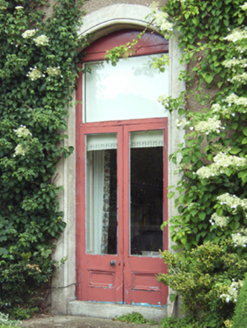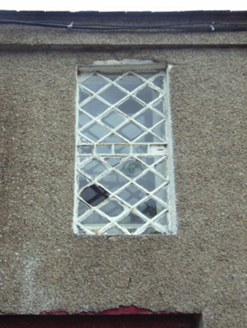Survey Data
Reg No
15603001
Rating
Regional
Categories of Special Interest
Architectural, Artistic, Historical, Social
Original Use
Farm house
In Use As
Farm house
Date
1811 - 1840
Coordinates
297739, 141049
Date Recorded
13/06/2005
Date Updated
--/--/--
Description
Detached five-bay two-storey farmhouse, extant 1840, on a rectangular plan centred on single-bay single-storey projecting glazed porch to ground floor; two-bay two-storey side elevations. Sold, 1890. Occupied, 1901; 1911. Refenestrated, ----. Hipped slate roof with terracotta ridge tiles, rendered chimney stacks on axis with ridge having corbelled stepped capping supporting terracotta or yellow terracotta tapered pots, and replacement uPVC rainwater goods on timber eaves boards on rendered eaves. Part creeper- or ivy-covered rendered or roughcast walls. Hipped segmental-headed central door opening into farmhouse with timber mullions supporting shallow cornice on timber transom, and concealed dressings framing timber panelled door having sidelights below fanlight. Square-headed window openings with cut-granite sills, and concealed dressings framing replacement one-over-one uPVC sash windows. Interior including (ground floor): central hall retaining carved timber surrounds to door openings framing timber panelled doors; and carved timber surrounds to door openings to remainder framing timber panelled doors with timber panelled shutters to window openings. Set in landscaped grounds.
Appraisal
A farmhouse representing an integral component of the early nineteenth-century domestic built heritage of Enniscorthy with the architectural value of the composition, one succeeding 'a small neat house' leased (1761) by Richard Bennett (d. 1798; Wilson 1805, 414; Rowe and Scallan 2004, 249), suggested by such attributes as the deliberate alignment maximising on panoramic vistas overlooking the meandering River Slaney with Vinegar Hill as a picturesque backdrop in the near distance; the compact plan form centred on a restrained doorcase showing a simple radial fanlight, albeit one partly concealed behind a later porch; and the diminishing in scale of the openings on each floor producing a graduated visual impression. Having been well maintained, the elementary form and massing survive intact together with substantial quantities of the original or replicated fabric, both to the exterior and to the interior, thus upholding the character or integrity of the composition. Furthermore, adjacent outbuildings (extant 1840) continue to contribute positively to the group and setting values of a self-contained ensemble having historic connections with Thomas Pounder (d. 1888), 'late of Blackstoops Enniscorthy County Wexford' (Calendars of Wills and Administrations 1888, 595); and the Yates family including John Francis Yates (----), 'Coal Merchant' (NA 1901; NA 1911).
